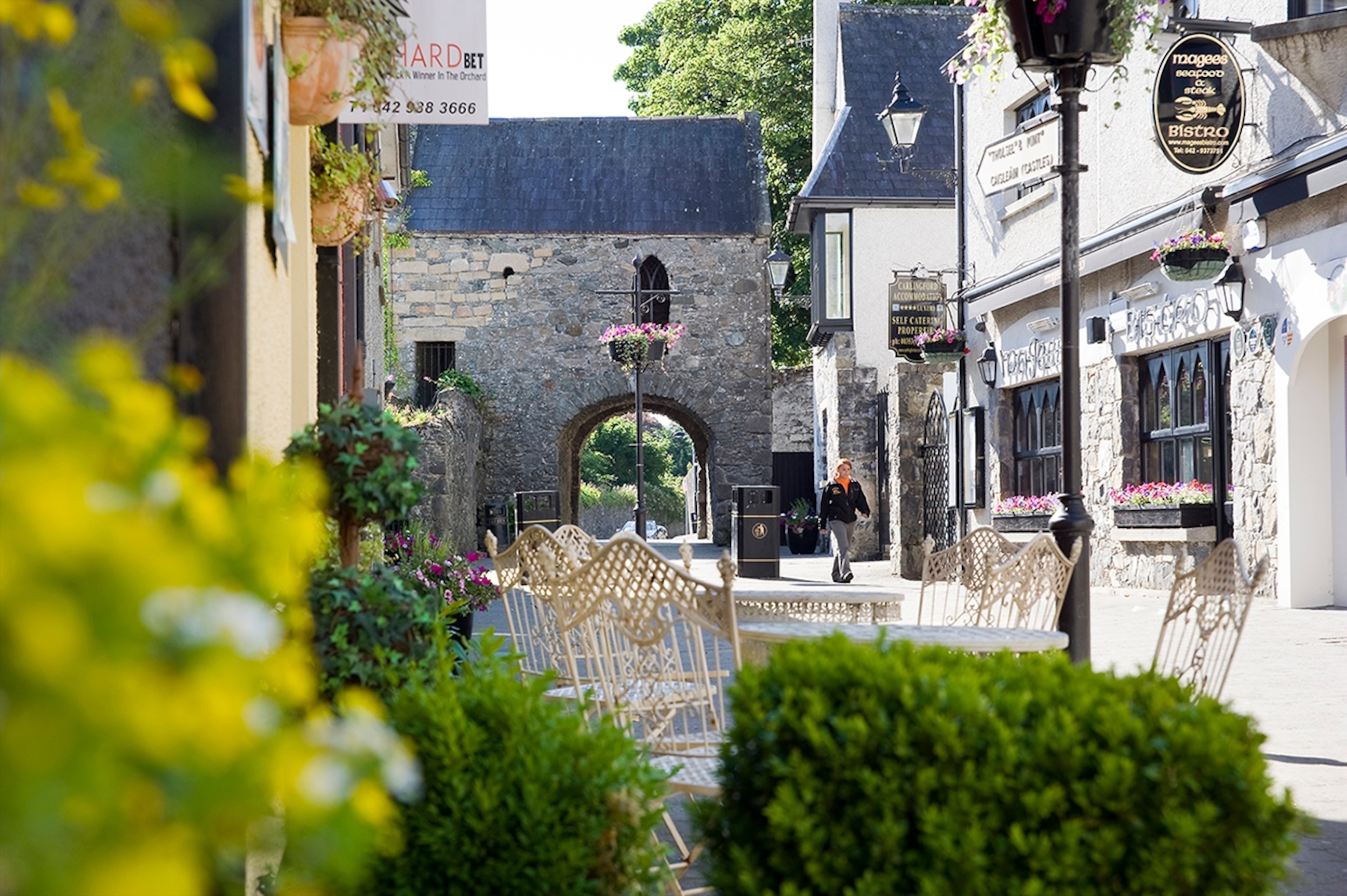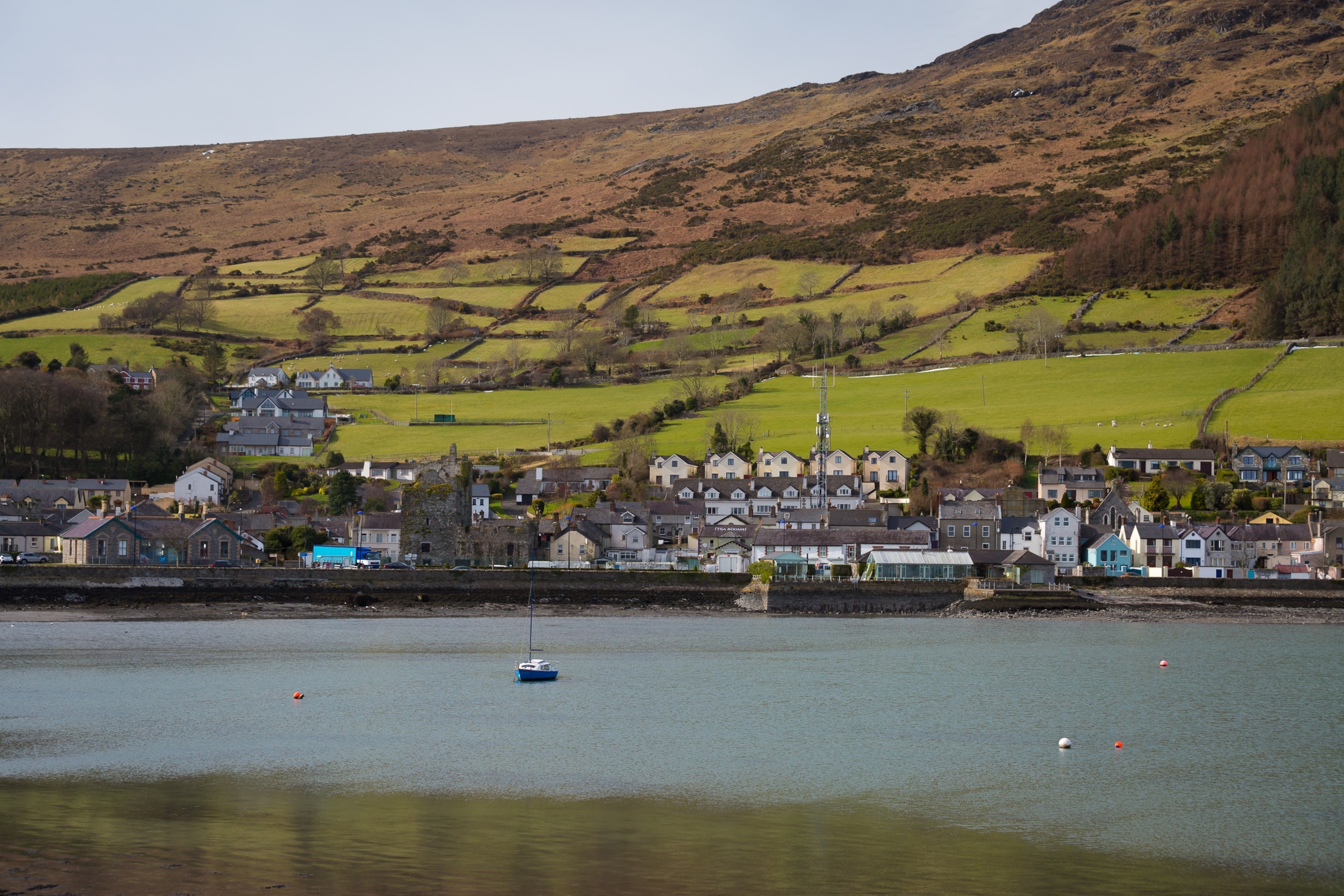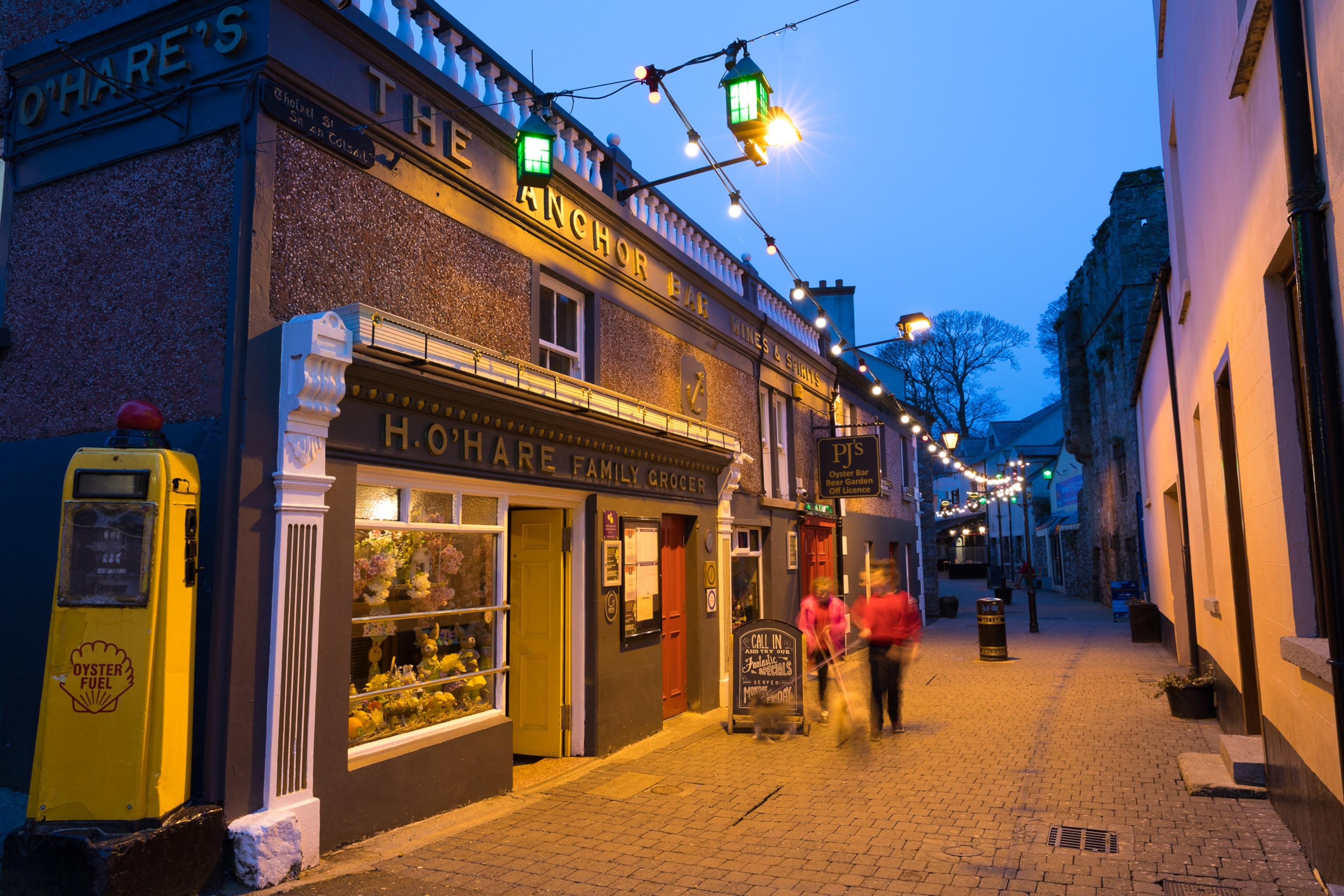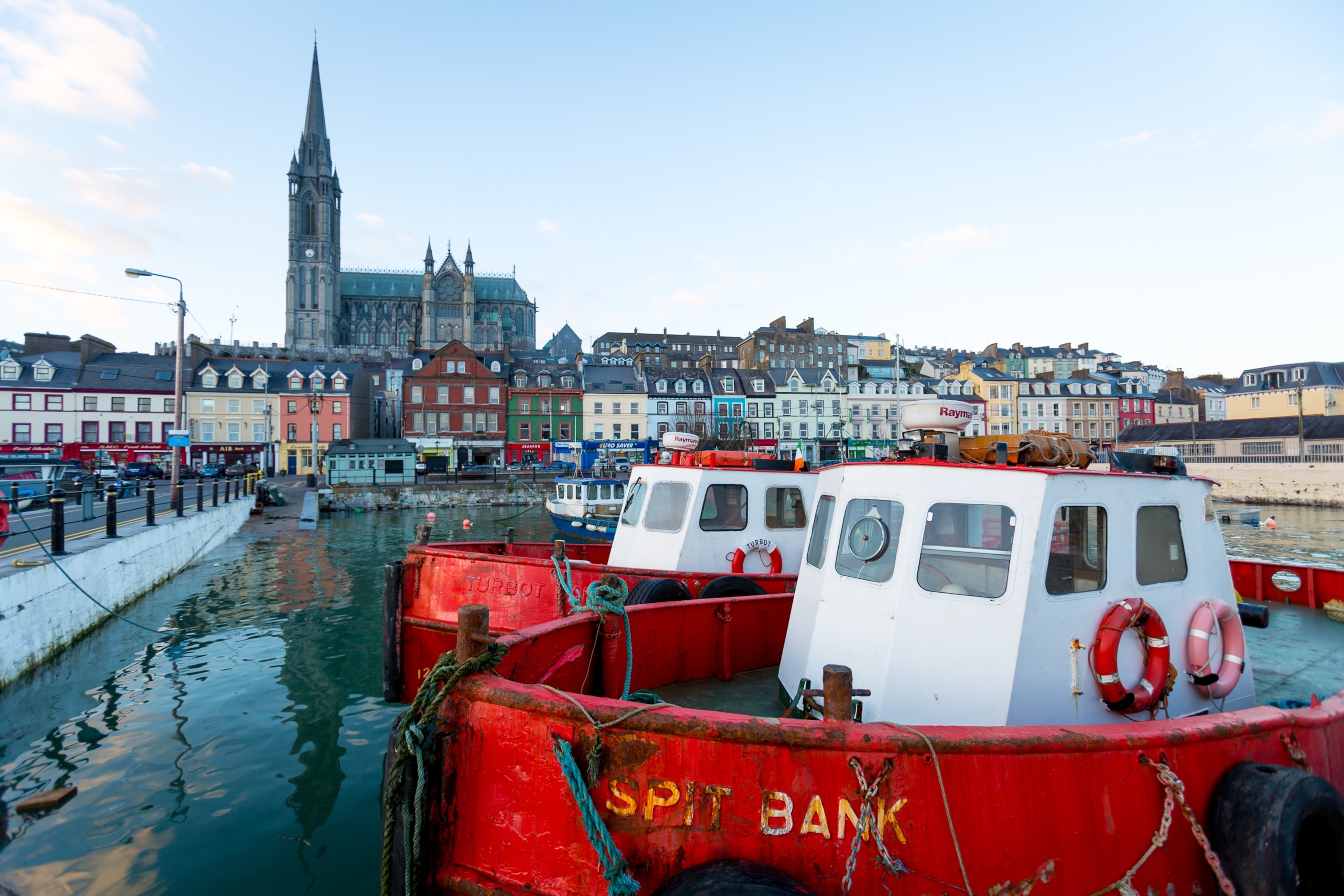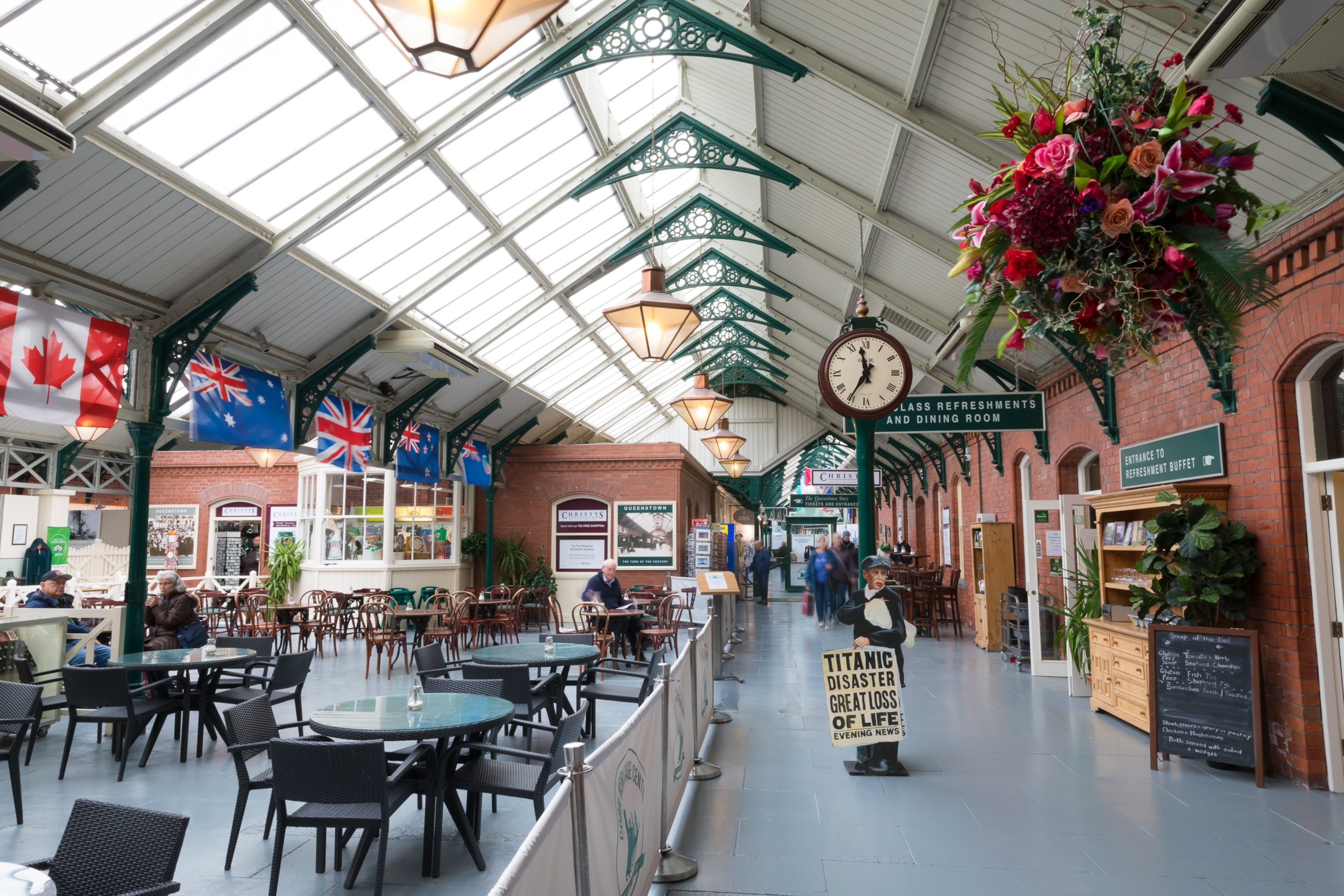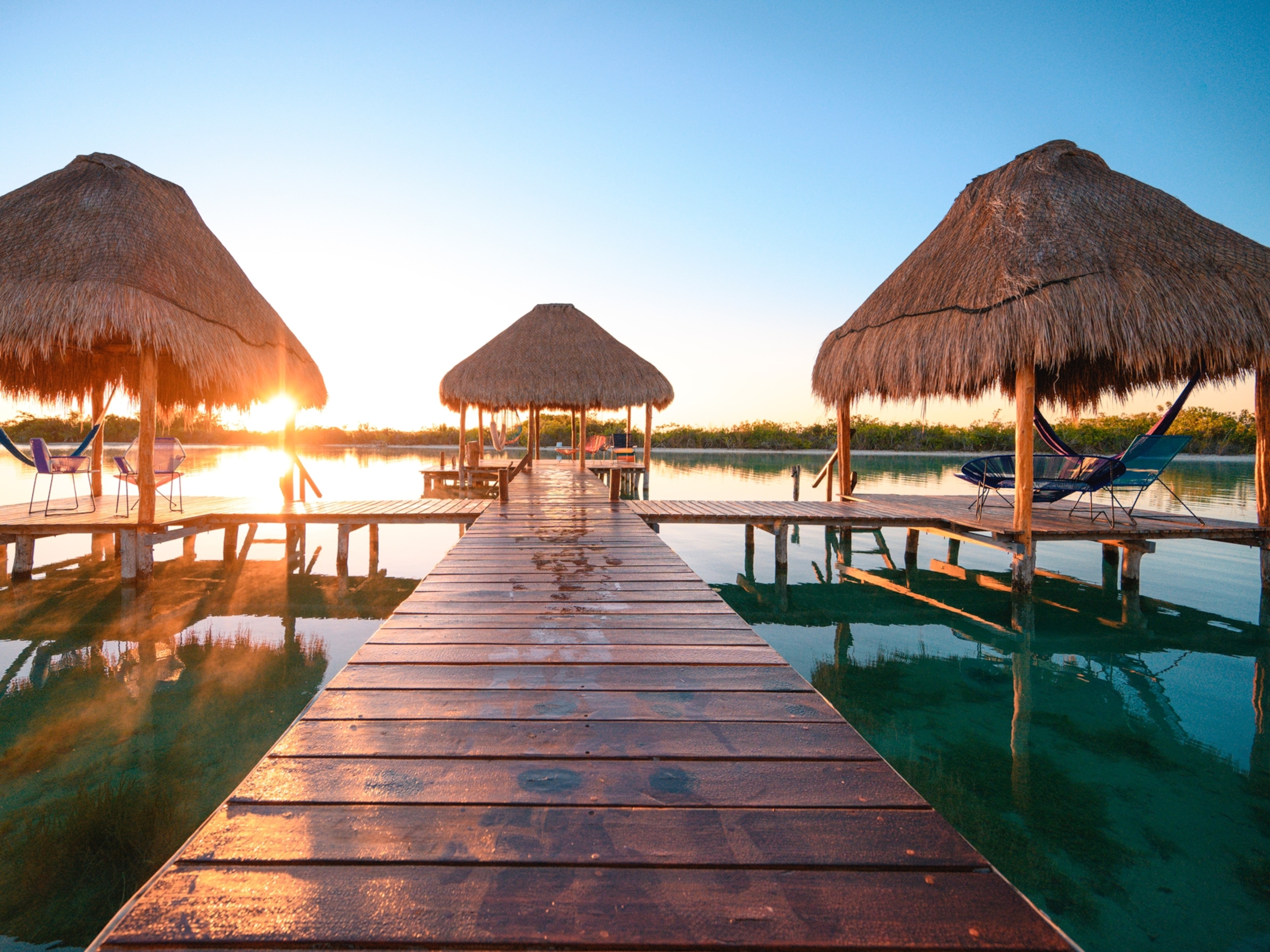
10 Charming Heritage Towns & Cities in Ireland’s Ancient East
Explore the history, the legends, and the stories through the centuries in Ireland’s Ancient East.
In Ireland’s Ancient East, take in medieval castles, Viking strongholds, Norman keeps, early Christian monasteries, Georgian homes, thatched cottages, traditional pubs, and museum treasures. These heritage towns are saturated in stories of the past – just ask any local and they’ll regale you with fantastic folklore. We’ve included iconic sites, new tours, and spots the locals frequent.
Carlingford:
This seaside village is a listed medieval heritage town. The 13th-century King John’s Castle juts out into the water, and is backed by a small town with a maze of laneways now bustling with lively pubs and eateries. Walk through the Tholsel, the arched gate into the once-walled town, and note the two fortified tower houses – the Mint and Taaffe’s Castle. Check out the soaring arches of the Dominican Friary established in 1305. You can visit the Carlingford Heritage Center, or better yet, hear the town’s stories firsthand on a walking tour with Carlingford Walks. Then head to PJ’s Oyster Bar & Restaurant established in 1777 to enjoy Carlingford oysters, Taaffe’s Red Ale, and live music. You can take the Scenic Carlingford Ferry to check out Greencastle Royal Castle guarding the other side of the lough.
Trim:
The ruins of Trim Castle, the largest Anglo-Norman castle in Ireland, dominate this heritage town along the Boyne River. The 12th-century fortress surrounded by a curtain wall and moat was featured in the movie Braveheart (1995). A bridge connects the castle to medieval ruins across the river – the Yellow Steeple at St. Mary’s Abbey and Talbot Castle, former home of author Jonathan Swift. Take the River Walk along the Boyne to the ruins of the 13th-century Priory of St. John the Baptist and Saints Peter & Paul Cathedral. A number of old-fashioned pubs offer traditional music, including The Old Stand, James Griffin Pub, and Marcie Regan’s Pub. Stay in nearby Bellinter House, a stone Palladian mansion built in 1750, and treat yourself to afternoon tea or a traditional seaweed bath at the Bathhouse Spa. Nearby, walk along the Gothic arches of the Cloisters at Bective Abbey founded in 1147.
Birr:
Birr’s stately Georgian buildings give it heritage status, but the star attraction is Birr Castle Gardens & Science Center. It’s the centuries-old residence of the Earls of Rosse, who were renowned astronomers, botanists, and engineers. On the grounds is the Great Telescope built in the 1840s that was the world’s largest for 70 years standing 40 feet high with a seven-foot-diameter tube that led to the discovery of the spiral nature of galaxies. The Science Center reveals the family’s pioneering discoveries. The formal gardens host the world’s tallest box hedges, plus rare plants. Look for events at Birr Theatre and Arts Centre, a Victorian building serving as home of the Birr Stage Guild. Have a pint with Traditional Cottage Pie at The Thatch Crinkill, a 200-year-old thatched roof pub and restaurant. Plan your trip around the Birr Vintage Week and Arts Festival in August, celebrating its 50th anniversary in 2018.
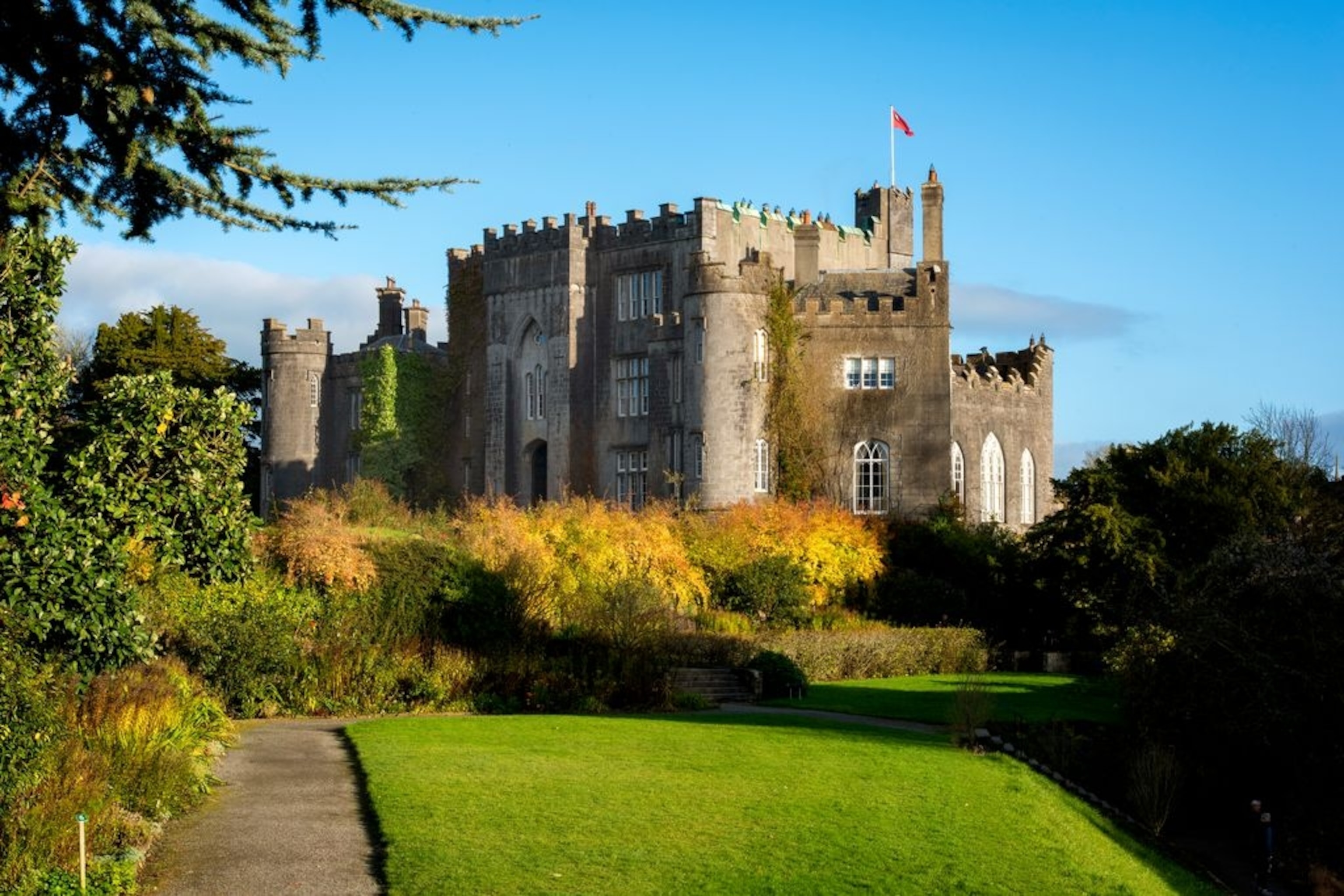
Kilkenny:
Ireland’s best-preserved medieval city is bookended by the magnificent 12th-century Kilkenny Castle with long portrait gallery to the south, and St. Canice’s Cathedral and Round Tower to the north. Get a bird’s eye view from the top of the ninth-century round tower, one of just two in the world you can still climb. Within the once-walled town is the Medieval Mile, packed with historical sites. Unearth 800 years of history at the new Medieval Mile Museum, or hear it firsthand on a Pat Tynan Kilkenny Walking Tour. Visit Rothe House, a 17th-century merchant’s home with artifacts and costumes. The Smithwick’s Experience at the brewery dating to 1710 features a guided tour on the history of brewing, plus a tasting. Stop at Kyteler’s Inn doing business for seven centuries and hear the story of the witch of Kilkenny over a pint. Tynan’s Bridge House Bar retains its Victorian interior with carved wood and gaslights, while M.L. Dore Nostalgia Café’s antique-filled décor sets the scene for afternoon tea.

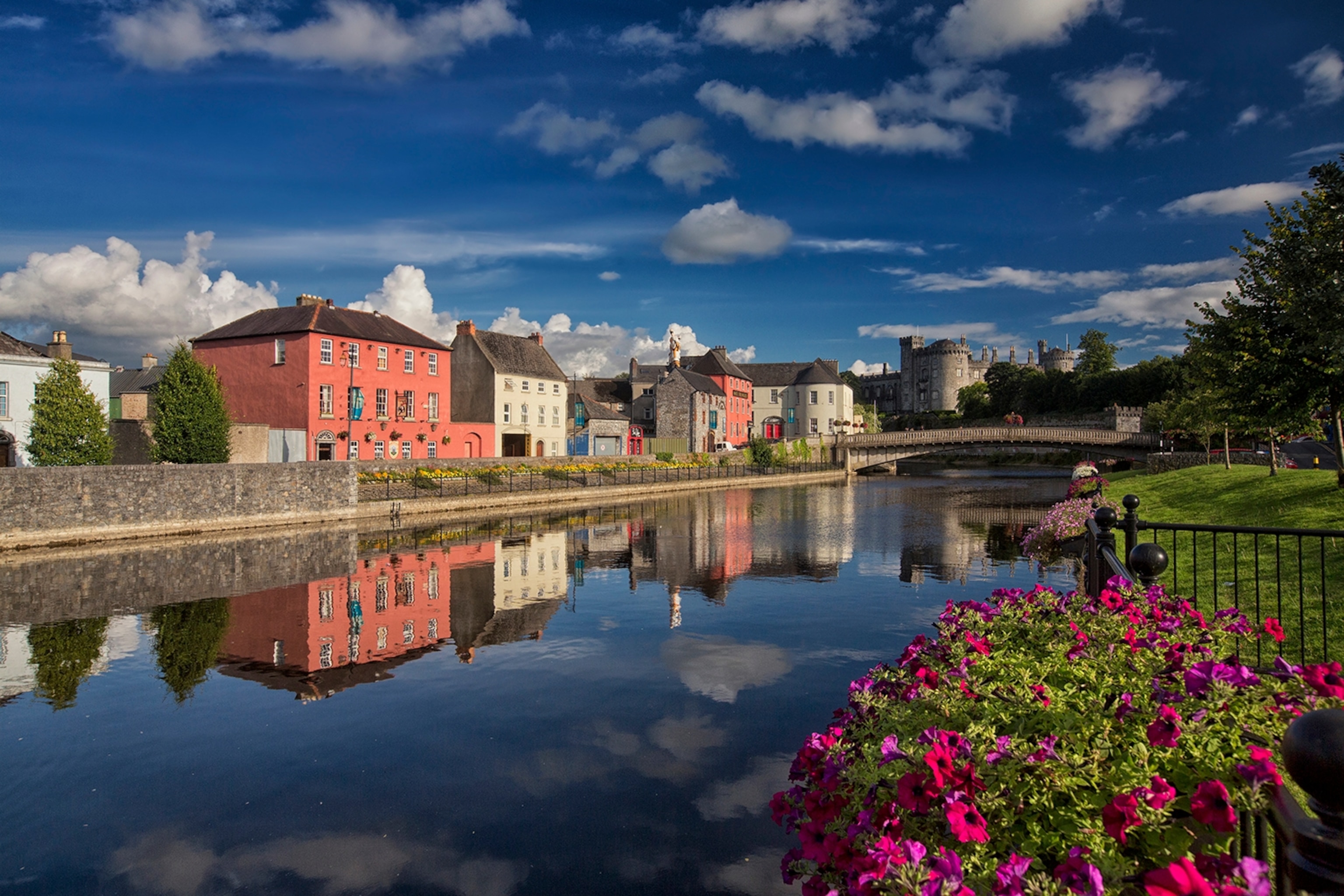
New Ross:
The quay in New Ross hosts the Dunbrody Famine Ship & Irish Emigrant Experience with a replica of an 1845 three-masted “coffin ship.” The museum expands on emigration and successful Irish figures in America, including Patrick Kennedy, great-grandfather of President John F. Kennedy who left on the Dunbrody for Boston. Also on the quay is a life-size bronze statue of President Kennedy extending his hand that shines from everyone shaking it. The President visited his family at the nearby Kennedy Homestead in 1947 and 1963, and his relations still farm the land. The visitor center here reveals the personal side of his visit and the history of the famous family. The John F. Kennedy Arboretum is a 623-acre memorial with 4,500 types of trees and shrubs celebrating its 50th anniversary in 2018. Earlier Norman history is revealed in Dunbrody Abbey and Castle founded in 1170 with an enormous Yew hedge maze on the grounds. The Ros Tapestry exhibition, Europe’s largest embroidered tapestry, features 15 panels depicting the town’s Norman history in thread, produced by volunteer stitchers.
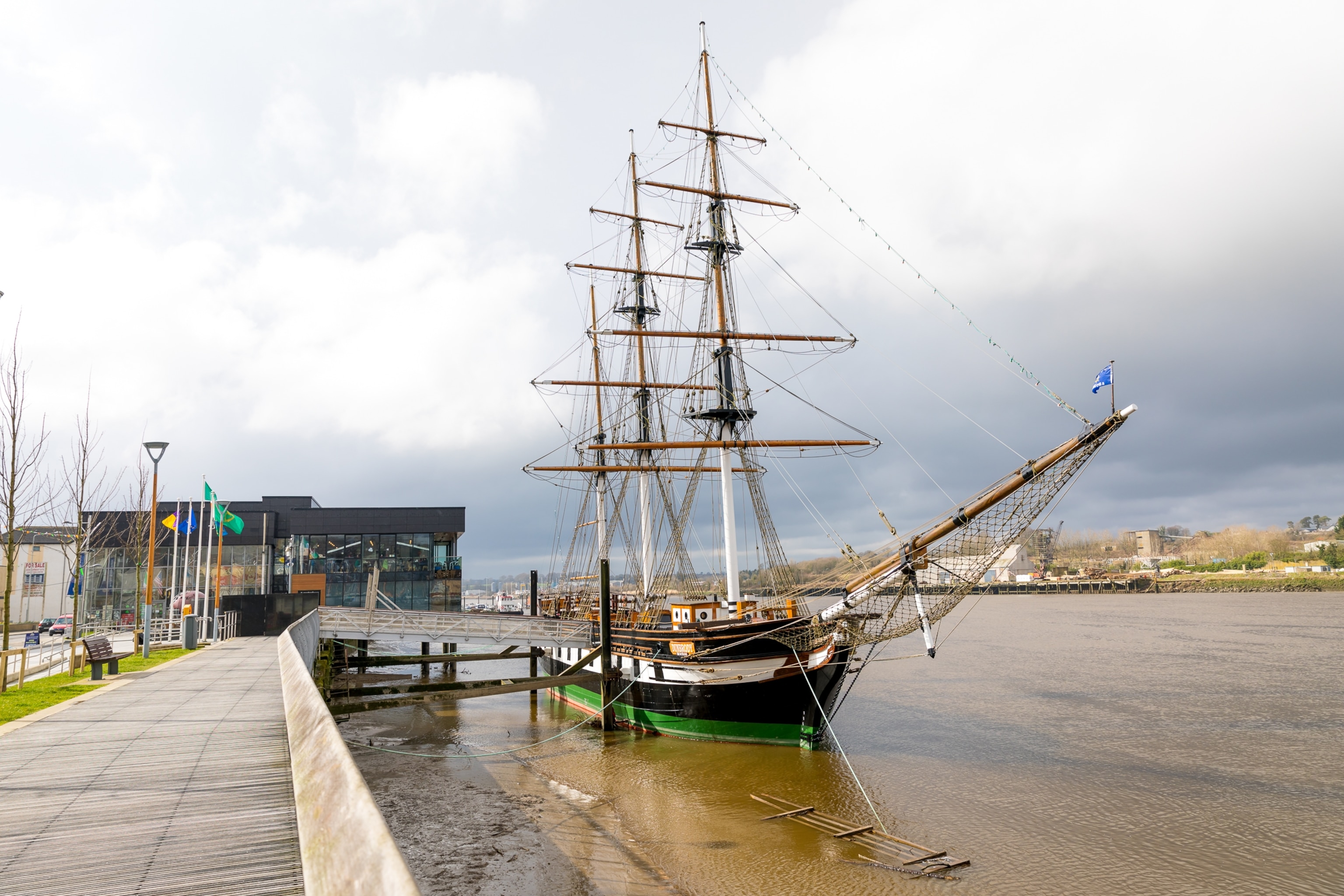
Dunmore East:
This picturesque seaside town has one of the largest concentrations of thatched cottages in Ireland, and features protected strands, sea cliff walks, and views across the harbor to Hook Lighthouse. The sheltered harbor was built 200 years ago to host the first regular mail boat to England and features a stone lighthouse designed as a fluted Doric column – the Dunmore East Bicentennial Festival marks the anniversary in September with regattas and maritime theme. There’s a new Coastal Walk along the headlands from the harbor to Portally. Stay in the Haven Hotel, a manse built in 1864 with classic vintage décor. The summer social scene at sunset revolves around the Strand Hotel and Restaurant where there is live music nightly and dining on the outdoor terrace overlooking the beach. Go for the Duncannon Mussels or Strand Seafood Pie. Later, check out the thatched Aggie Hayes’ Pub with a turf fire established in 1730, or Power’s Bar, a fishermen’s pub at the harbor with regular traditional music sessions that’s known as “The Butcher’s” among locals from when it was a combined pub-grocery-butcher shop.
Waterford:
Waterford is one of Ireland’s oldest cities, with archaeological evidence of Viking settlement in the 10th century. The Waterford Treasures, three museums covering 1,100 years of history, are the highlight of the Viking Triangle. First is Reginald’s Tower exhibiting Viking artifacts, including a warrior’s sword and a replica Viking longboat at the entrance. Next is the Medieval Museum – don’t miss the ornate vestments of spun gold dating to 1460. The Bishop’s Palace, a grand 18th-century residence, chronicles Waterford history from 1700 to 1970. Across the street is the House of Waterford Crystal founded in 1783 with history and craftsmanship featured on the guided tour. The Epic Tour of the Viking Triangle provides historical perspective and access to six national monuments. Take in a performance at Theatre Royal, Ireland’s oldest continually operating theatre dating to 1785. Stay in Waterford Castle, a five-star Island Resort, dating to the 16th century and reached by ferry crossing. It was recently renovated and restored to former glory with antiques, tapestries, and Waterford crystal chandeliers. Falconry and exquisite cuisine are additional highlights.
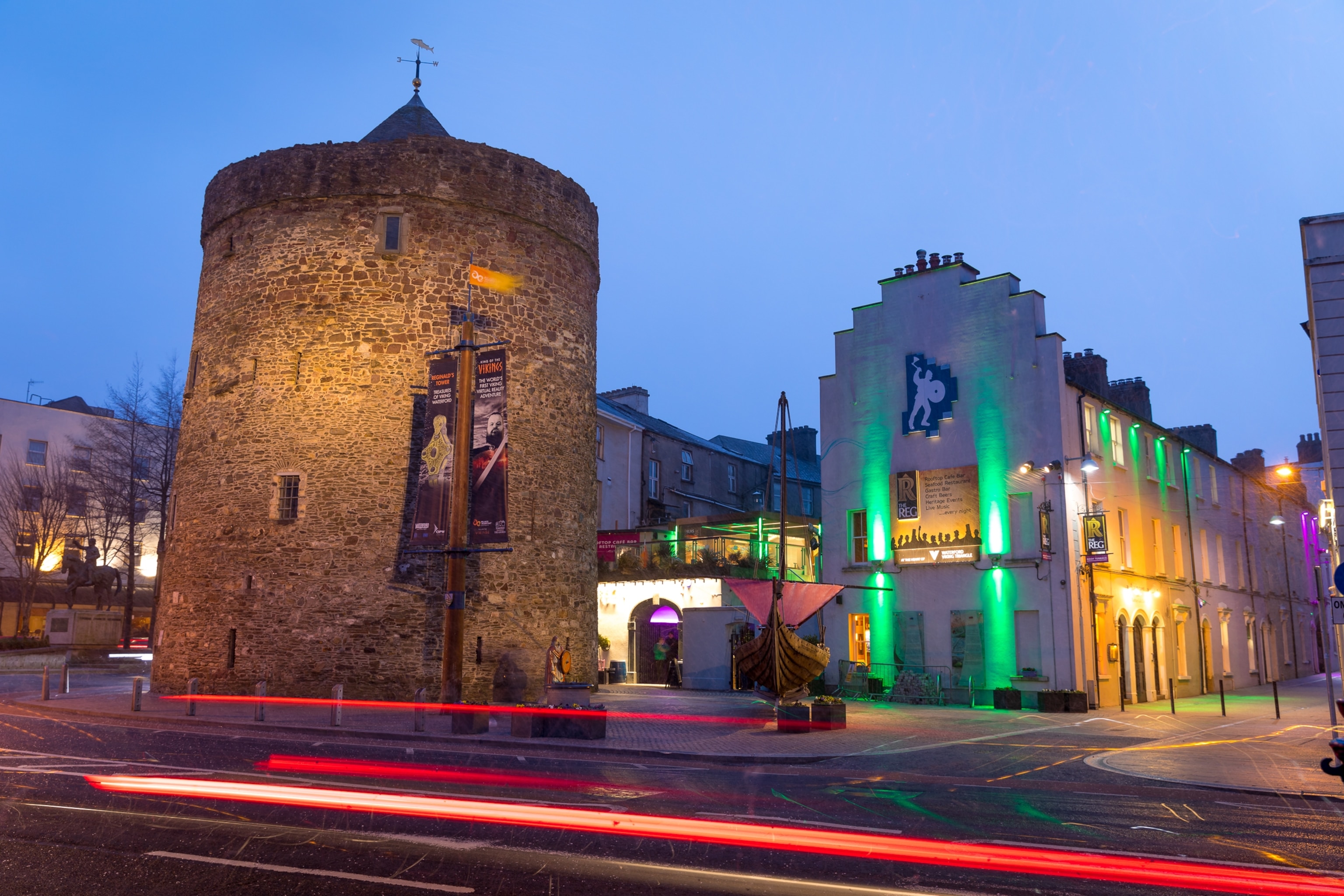
- National Geographic Expeditions
Cashel:
Cashel sits in the “Golden Vale” a lush area that is one of most prized that is prized for agriculture and race horses. With rolling farm lands, impressive ruins, and the charming store facades, Cashel is popular with visitors. The Rock of Cashel commands attention here, a recently restored fortress sitting atop a high limestone outcropping with cathedral and buildings dating to the 12th and 13th centuries, round tower, Celtic crosses, and the oldest Romanesque wall paintings in the country. Brian Boru was crowned High King of Ireland here in 990. For ruins to kick around without the crowds, head to Hore Abbey, founded in 1266. The Cashel Town Trail takes in 20 historical sites around town, including a thatched peasant’s cottage, fortified tower house, and Cashel Folk Village. Just south of town is Athassel Abbey, the largest medieval priory in Ireland stretching over four acres along the River Suir. Dine at the atmospheric Chez Hans Restaurant, serving gourmet cuisine in an old church. Top off the night at T.J. Ryan’s Bar, established in the 1600s and full of bric-a-brac.
Cork:
Climb the 120-foot-high tower at St. Anne’s Church to get the lay of this bustling city and play a tune on the Bells of Shandon. You can get panoramic views of Cork Harbor, as well as the expanse of the universe, from Blackrock Castle Observatory. There are also good city views from the top of the star-shaped walls at Elizabeth Fort that saw action in the 1690 Siege of Cork. The city was the key provisioning port-of-call for British ships sailing to the New World, and the English Market established in 1788 continues to offer local artisan food specialties like spotted dog bread and buttered eggs. The city once hosted the world’s largest butter market, explained in the Cork Butter Museum. The Franciscan Well Brewery and Brewpub is located in 13th-century Shandon Friary, an evocative place to sample their Rebel Red and Jameson-Aged Stout. The Crawford Art Gallery incorporates the 1724 Customs House, and has an extensive collection of Irish artists. Look for events at the Everyman Palace Theatre, a Victorian building with ornate décor.

Cobh:
The town of Cobh is the perfect blend of quirky and historic. Colorful houses line the streets and harbor offering incredible views of the centuries-old port. The harbor was one of Ireland’s primary points of departure for emigrants, and the last port of call for the Titanic. Cobh Heritage Centre in a Victorian railway station explores emigration, the Titanic, and the nearby sinking of the RMS Lusitania during World War I. Titanic Experience Cobh in the original White Star Line Ticket Office tells the story of Titanic’s passengers and voyage, with access to the original pier, cabin recreations, a cinematic experience of the sinking, and audiovisual presentations. Hear the dramatic stories on the Titanic Trail, a guided heritage walking tour of Cobh, with Dr. Michael Martin, a Titanic expert, author, and enthusiast. Hop the ferry across the harbor to Spike Island, recently opened to visitors, to tour the 18th-century star-shaped fort named Fort Mitchel, and notorious Victorian prison, the largest in the world in the 1850s.
